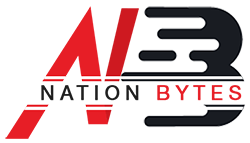Why 100G QSFP28 LR4 for Long-Distance Links?
Discover why 100G QSFP28 LR4 is ideal for long-distance links — offering high-speed, reliable data transmission up to 10km over single-mode fiber.

The world of data centers, enterprise networks, and cloud computing is evolving at lightning speed. With the exponential growth of big data, IoT, and artificial intelligence, the demand for high-performance networking solutions has never been greater. One of the most important technologies enabling this transformation is the 100G QSFP28 LR4 transceiver module.
This article explores what 100G QSFP28 LR4 is, how it works, why it matters for modern networks, and whether it’s the right solution for your infrastructure.
What is 100G QSFP28 LR4?
The 100G QSFP28 LR4 is a high-speed optical transceiver designed to transmit 100 gigabits per second (Gbps) over single-mode fiber (SMF). It supports long-distance connectivity up to 10 kilometers, making it a popular choice for data centers, cloud service providers, and telecom networks.
-
Form factor: QSFP28 (Quad Small Form-factor Pluggable)
-
Transmission rate: 100Gbps
-
Fiber type: Single-mode fiber (SMF)
-
Reach: Up to 10km
-
Power consumption: Typically <4W
Its compact size, high capacity, and efficiency make it a preferred solution for long-haul connections in high-performance computing environments.
Key Specifications of QSFP28 LR4
The QSFP28 LR4 transceiver combines speed, reach, and efficiency. Here are its standout features:
-
Operating wavelength: 1270nm – 1330nm
-
Transmission distance: Up to 10km (single-mode fiber)
-
Data lanes: 4 × 25Gbps = 100Gbps total
-
Power efficiency: <4W consumption
-
Technology: LAN-WDM (Wavelength Division Multiplexing)
This allows the module to carry four parallel optical signals across different wavelengths, combining them into one high-speed data stream.
How LR4 Differs from SR4 and PSM4
To better understand LR4’s advantages, let’s compare it with SR4 (Short Range) and PSM4 (Parallel Single Mode).
|
Module Type |
Distance |
Fiber Type |
Power Use |
Typical Use Case |
|
QSFP28 SR4 |
Up to 100m |
Multimode Fiber |
Low |
Short-reach, inside data centers |
|
QSFP28 PSM4 |
Up to 500m |
Single-mode Fiber |
Moderate |
Medium-reach with multiple fibers |
|
QSFP28 LR4 |
Up to 10km |
Single-mode Fiber |
Low |
Long-distance, inter-data center links |
LR4 strikes the perfect balance — long distance (10km) without requiring overly complex or costly infrastructure.
Benefits of 100G QSFP28 LR4 for Enterprise Networks
1. High-Speed Long-Distance Transmission
The QSFP28 LR4 ensures seamless 100Gbps connectivity across distances up to 10km, ideal for connecting large campuses, data centers, or branch networks.
2. Power Efficiency
With power consumption typically below 4W, LR4 modules provide both performance and energy savings, reducing operational costs.
3. Scalability & Future-Proofing
As enterprise networks continue to expand, adopting 100G LR4 ensures that businesses are prepared for increasing bandwidth demands.
4. Reliability
The technology minimizes signal loss and degradation, guaranteeing low-latency, stable performance — a must for financial, cloud, and AI-driven applications.
Pros and Cons of QSFP28 LR4
Pros
-
Supports 10km reach (long-distance)
-
High 100Gbps transmission rate
-
Low power consumption (<4W)
-
Uses LAN-WDM multiplexing for efficiency
-
Highly reliable with minimal signal degradation
Cons
-
Higher initial cost compared to SR4 or PSM4
-
Requires single-mode fiber infrastructure
-
Compatibility must be checked with existing systems
Use Cases of 100G QSFP28 LR4
-
Data Center Interconnects (DCI): Connecting multiple data centers across cities or regions.
-
Enterprise Backbone Networks: Large enterprises with geographically dispersed offices.
-
Telecommunications: Long-haul backbone networks requiring stable, high-capacity links.
-
Cloud Computing: High-speed connectivity for AI, big data, and real-time analytics.
Future of 100G QSFP28 LR4
With the rise of AI workloads, 5G, and IoT, the need for high-speed, long-distance optical modules will only increase. While 400G and 800G transceivers are emerging, 100G LR4 remains the backbone for enterprises and telecoms because of its affordability, reliability, and wide compatibility.
Conclusion
The 100G QSFP28 LR4 optical transceiver is more than just another networking component — it’s a critical enabler of high-speed, long-distance connectivity for modern enterprises and data centers. Offering 10km reach, low power consumption, and reliable 100Gbps speeds, LR4 remains a cost-effective and future-proof choice for organizations expanding their network infrastructure.
As demand for bandwidth-intensive applications grows, investing in QSFP28 LR4 technology ensures scalability, stability, and performance — making it a cornerstone of next-generation digital infrastructure.
FAQs
Q1: What is the maximum reach of 100G QSFP28 LR4?
It supports up to 10km over single-mode fiber (SMF).
Q2: How is LR4 different from SR4?
LR4 is for long-reach (10km), while SR4 supports short distances (100m).
Q3: What type of fiber does LR4 use?
It is designed for single-mode fiber (SMF).
Q4: Is QSFP28 LR4 power efficient?
Yes, it consumes less than 4W, making it one of the most efficient 100G modules.
Q5: Who should use LR4 transceivers?
Enterprises, telecom providers, and cloud data centers requiring long-distance, high-speed connectivity.

 Israr Ahmed
Israr Ahmed